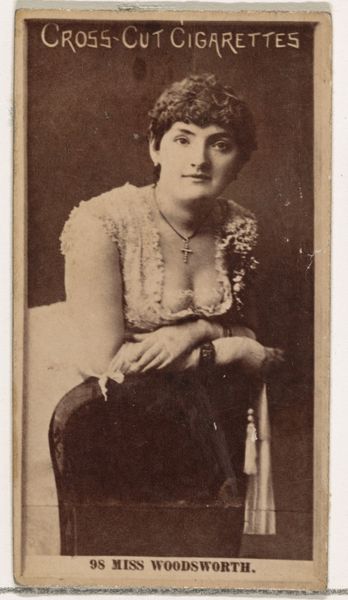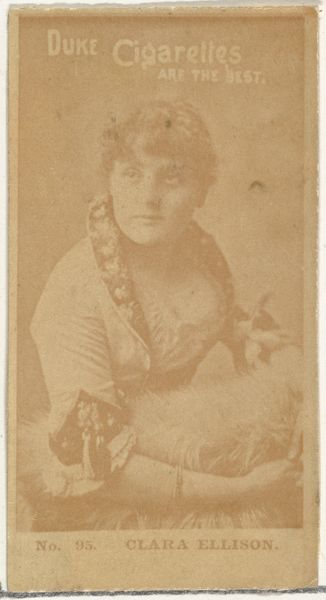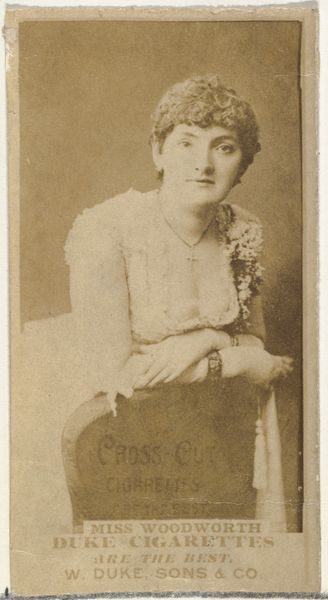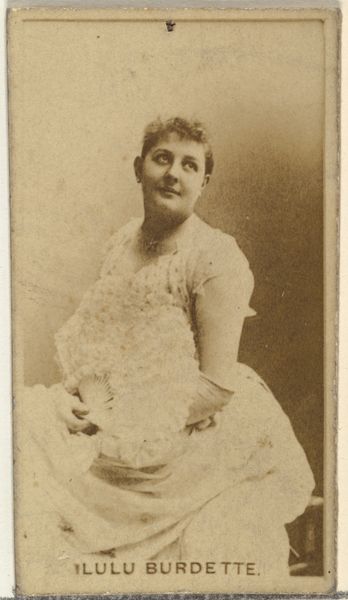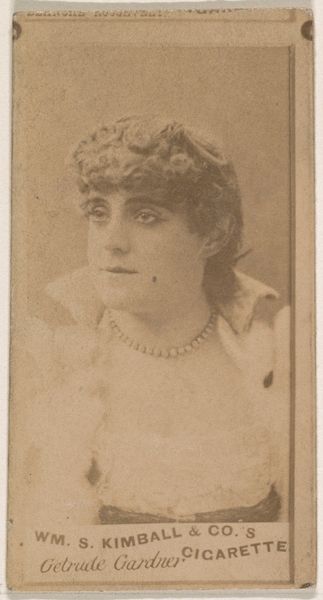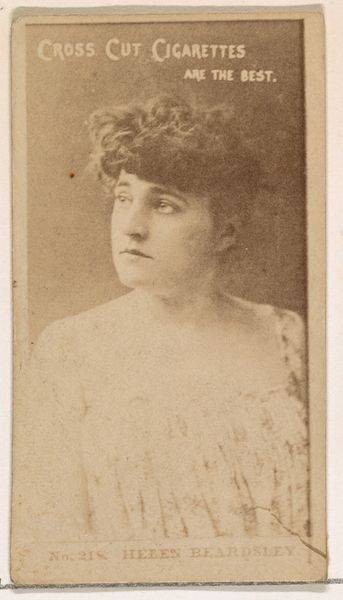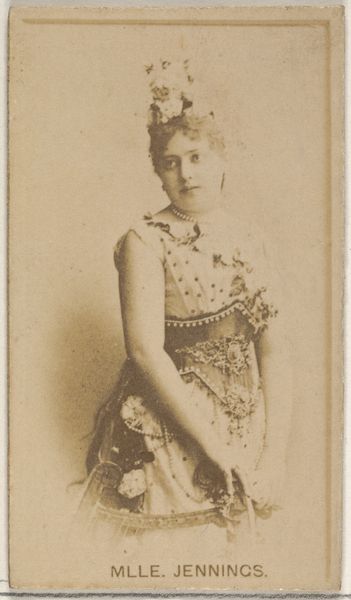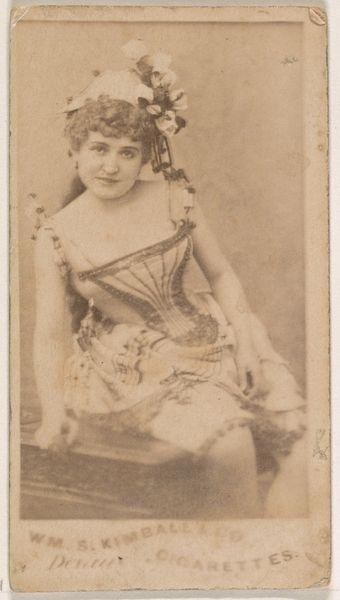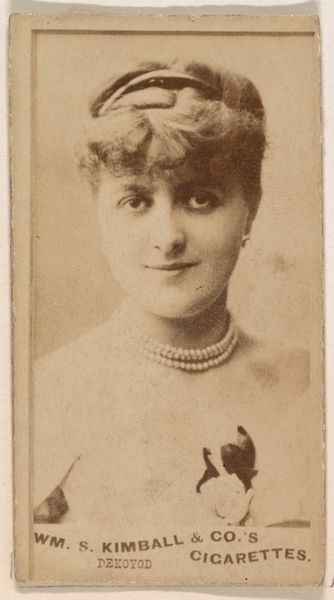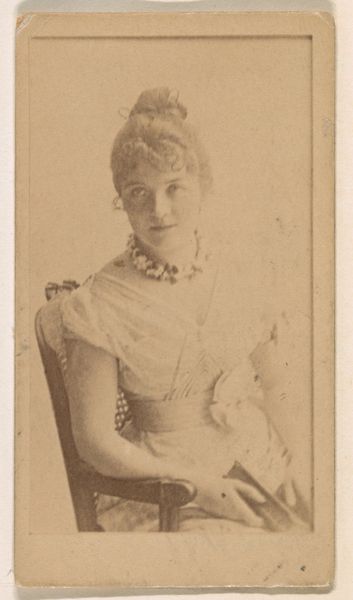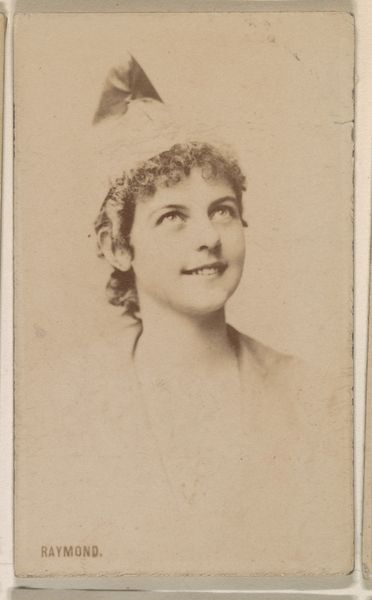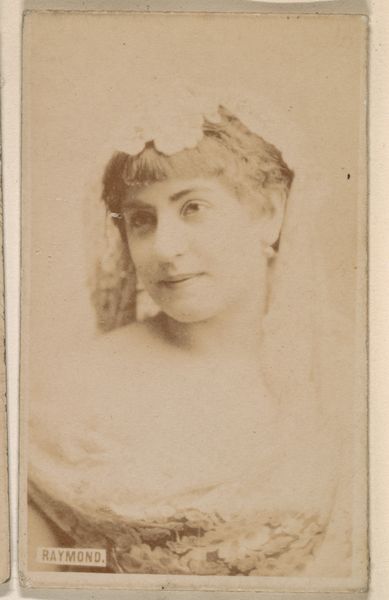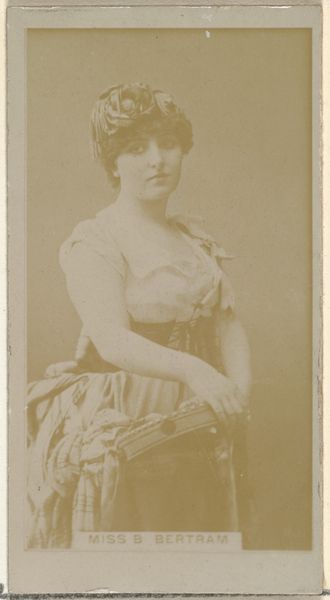
Card Number 98, Miss Wordsworth, from the Actors and Actresses series (N145-1) issued by Duke Sons & Co. to promote Cross Cut Cigarettes 1880s
0:00
0:00
drawing, print, photography
#
portrait
#
drawing
#
pictorialism
# print
#
photography
#
coloured pencil
Dimensions: Sheet: 2 1/2 × 1 3/8 in. (6.4 × 3.5 cm)
Copyright: Public Domain
Editor: Here we have "Card Number 98, Miss Wordsworth," a promotional card from the 1880s by W. Duke, Sons & Co., for Cross Cut Cigarettes. It's a photograph, but it has a softness to it that makes me think of drawings, perhaps even colored pencil work. It strikes me as odd—this blend of high society portraiture and mass-produced advertisement. What can you tell me about this, viewed through a material lens? Curator: Precisely! It's crucial to consider the socio-economic implications embedded in its production and distribution. Think about the tobacco industry at this time – the labor, the distribution networks, the consumer culture being cultivated. These cards were not precious artworks meant for gallery walls. Editor: Right, so how does a photograph become a *thing* used to sell cigarettes? Curator: That's the question, isn't it? The photograph is reproduced, commodified, distributed widely, and, perhaps discarded just as quickly. The photographic print transforms into a collectible item which drives tobacco sales; and also, it's how photography became widely spread to everyday consumers through commercial enterprise, which, later, informed people about photography as an art form. We should also investigate the materials used: the card stock, the printing process. What does their standardization and mass production tell us about the changing landscape of labor and manufacturing during the late 19th century? Editor: It is kind of amazing to consider that each of these seemingly disposable cards actually contains this whole complex story of industry and material culture. Thanks for pointing that out! Curator: Indeed. Analyzing art through a material lens encourages us to appreciate the intertwined relationship between art, labor, and consumption, reshaping our understanding of beauty and value.
Comments
No comments
Be the first to comment and join the conversation on the ultimate creative platform.
